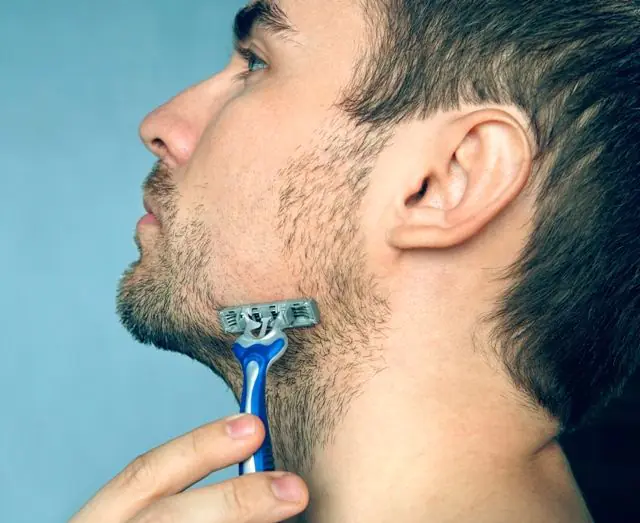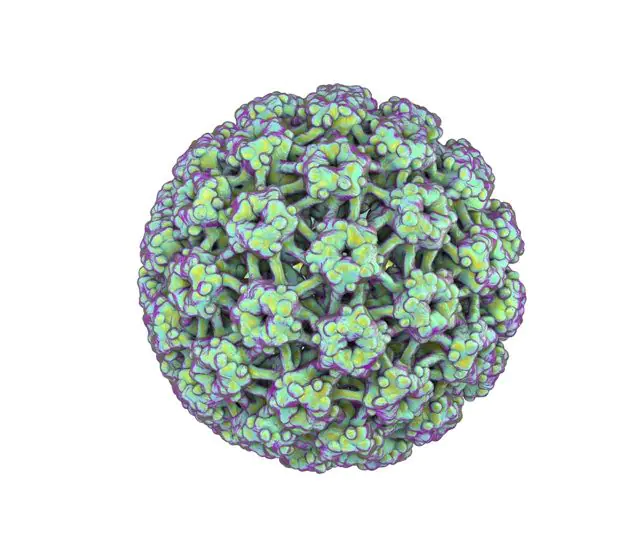
- Is HPV transmitted through household contact?
- Transfer methods
- At-risk groups
- Prevention of HPV infection
The contact and household route of transmission of the papilloma virus is a rather rare way for HPV to enter the human body. It is worth talking about only if there is close physical contact between a healthy and sick person. For this, for example, contaminated items must be used. What exactly the mechanism of its spread looks like, what contributes to it and how to prevent it will be discussed in this article.
Is HPV transmitted through household contact?

Of course, the human papillomavirus is transmitted through household contact, and most often through objects shared with a sick person. True, the probability of this is not very high compared to other methods - sexual and vertical.
This way, mainly those strains that cause the appearance of papillomas on the skin, and not on the genitals or in the oral cavity, can be transmitted.
The everyday route involves close contact with an HPV carrier, for example, living together with him in the same house. It is for this reason that close relatives of the patient - husband or wife, children, parents, sisters and brothers - are most often susceptible to infection.
Note! The papilloma virus is transmitted through household contact both between adults and children. But at the same time, this phenomenon is not strictly tied to age; absolutely anyone can become a carrier of HPV.- Read on the topic: How is the human papillomavirus transmitted?
Methods of transmission of the papilloma virus through household means

The photo shows objects through which HPV is transmitted
Infection occurs as a result of the use of those things and objects that have traces of the virus. However, they pose a danger only if they were recently used by a sick person. The reason for this is the impossibility of HPV existing outside the body for a long time when there are no suitable conditions for this. One of these, in turn, is a humid environment.
HPV, which remains active on the carrier’s personal belongings, usually transfers to it upon contact with the skin of a healthy person. If the latter has damage, even the smallest cracks, and even more so wounds, then the papilloma virus is transmitted through household means, penetrating through them into the blood and infecting cells. Then, if HPV does not see any obstacles for itself in the form of a protective reaction of the immune system, then it continues to attack and move further through the body.
Here's how infection can occur:
- Towels. Naturally, they threaten health only if they have not yet dried out after a virus carrier has visited the shower. When wiping the body with it, infectious agents accumulate on its surface and remain there for a certain time until they die. If a healthy person used this towel, it means that he exposed himself to the risk of being transmitted to the human papillomavirus through household means.
- Razors. They are dangerous if only because they involve contact with the skin and can lead to tissue damage. Thus, if there are viruses on their surface, these infectious agents, if the surface is damaged, can leak into the blood and lead to infection. This is all the more relevant in connection with carrying out procedures in humid conditions, where HPV, we remind you, feels great.
- Soap. The tradition of using the same bar soap does not lead to anything good, since HPV can remain in the soap solution formed as a result of soaping hands for a long time and remain active. If a person has wounds and ulcers on his skin, then when washing his hands there may be a risk of transmitting the human papillomavirus through household means.
- Dishes. Infectious agents can persist on it for a long time if plates, spoons, forks, etc. poorly washed. At the same time, you need to understand that ordinary soap and cold water cannot eliminate them. Therefore, those who use special detergents with antibacterial properties are less likely to suffer from HPV.
- Washcloth. This is a common thing where the papilloma virus accumulates in large quantities. There is simply an ideal environment for him here - high humidity, which allows him not to die for a long time. And throughout this entire period, if a healthy person uses a washcloth shared with a sick person, he threatens him. The more damage he has on his body, the higher the likelihood of becoming a carrier of HPV.
- Bed sheets. The risk of transmitting the human papillomavirus through household means exists only if you do not wash or change the sheets, pillowcases, bedspreads, and duvet covers on which a sick person sleeps for a very long time. The situation becomes especially acute for spouses if one of them is a carrier of HPV.
- Toothbrush. There should be a taboo on the use of this hygiene item that belongs to another person. The reason is the interaction of the fleecy part with saliva and the possibility of damage to the mucous membrane, as a result of which traces of blood will remain on the brush. All this creates favorable conditions for infection of a healthy person who decides to use this product at least once. The threat of transmission of the human papillomavirus through household means remains even with prolonged treatment of things with special compounds.
- Cloth. Sharing it, if it has not been washed and has not undergone the necessary treatment against infections, may well lead to the transmission of the papilloma virus. The likelihood of this increases when using old underwear and swimwear. In such a situation, people expose themselves primarily to HPV types that cause the appearance of formations on the genitals.
If we talk about infection between not close people, then the basis for this is swimming in the same pool with virus carriers, visiting baths and saunas. But this is only relevant if the water and the room are not treated with special substances, which is quite possible.
Also, one should not lose sight of the option of household transmission of the human papillomavirus as a result of doctors using unsterile instruments. Most often this happens at an appointment with a dentist, gynecologist, proctologist, gastroenterologist and otolaryngologist. The same scenario may be inherent in surgical practice, when poorly sterilized instruments are used during operations.
Visiting an irresponsible manicurist, which is poorly suited to sterilizing working instruments, should also be of concern. The same applies to people planning to pierce their ear, nose, navel, or get a tattoo from inexperienced specialists.
The most unlikely way of transmitting the human papillomavirus in a household way is a handshake, since for this, both the sick and healthy person must have noticeable cracks, ulcers and other damage to the skin. In the case of tissue contact with the formation itself, the risk of this increases significantly, and the older and larger the growth, the higher the likelihood of this.- Read also: is papilloma transmitted through a condom?
Risk groups for household transmission of papillomavirus

Most susceptible to this children and pregnant women, whose body is poorly protected from viral attacks. The reason for this is their frequent stay in crowded places - almost all children attend kindergartens or schools, where there may be many infected peers. Girls carrying a child are also forced to regularly visit the clinic, take various tests, and undergo a gynecological examination using special instruments.
The risk group for household transmission of human papillomavirus includes: people who are about to undergo surgery, both under local and general anesthesia. This is especially true for those who have chosen public hospitals or medical centers with a bad reputation.
The risk of contracting a virus appears in people in case of ignoring the rules of personal hygiene - washing hands, brushing teeth, bathing. This is also facilitated by rare general cleaning of the house and a reluctance to regularly ventilate the premises.
Walking barefoot on the street and in the house if there are infected people there can transmit the human papillomavirus through household means. This is also negatively affected by an untimely reaction to damage to the skin through which the virus can enter the body.Prevention of HPV infection through household means

To prevent infection of the body, it is necessary to follow the rules of personal hygiene: wash your hands after visiting public places and before eating, bathe regularly and brush your teeth.
You should periodically carry out general and wet cleaning of the house, do not forget to wash bed linen and clothes in a timely manner, and ventilate the room every day.
To avoid transmission of the human papillomavirus through household means, you should not use other people’s eyebrow tweezers and nail files, cosmetics, towels and other items that could potentially be a source of HPV infection. If this cannot be avoided, as, for example, in the case of a hospital, it is necessary to require doctors to thoroughly sterilize instruments. But it is still best that they are disposable and opened in front of the patient.
You should only visit pools where the rules for preparing water for swimming in public places are not ignored.
Success in preventing the transmission of human papillomavirus through household means guarantees strengthening the immune system and maintaining a healthy lifestyle. It is necessary to eat healthy fruits and vegetables, berries and herbs, and do not forget about additional vitamin and mineral complexes - Perfectil, Vitrum, Alphabet, etc.- See also the features of preventing the appearance of warts
Is HPV transmitted through household contact? Look at the video:
[media=https://www.youtube.com/watch?v=K6uekF4iU_k]
When communicating with a person infected with HPV, you should always remember the likelihood of transmitting the papilloma virus through household means. But we should not forget that it is far from the most relevant; there are much more dangerous ways of its penetration into the body - sexually and vertically, during childbirth.
- Related article: How warts are transmitted from person to person



